Safe Natural Sunscreen for Kids & Babies
Conventional sunscreens contain harmful chemicals and may increase your risk of sunburn and ironically, cancer. In this guide, we’re sharing the safest natural sunscreens for kids and babies.
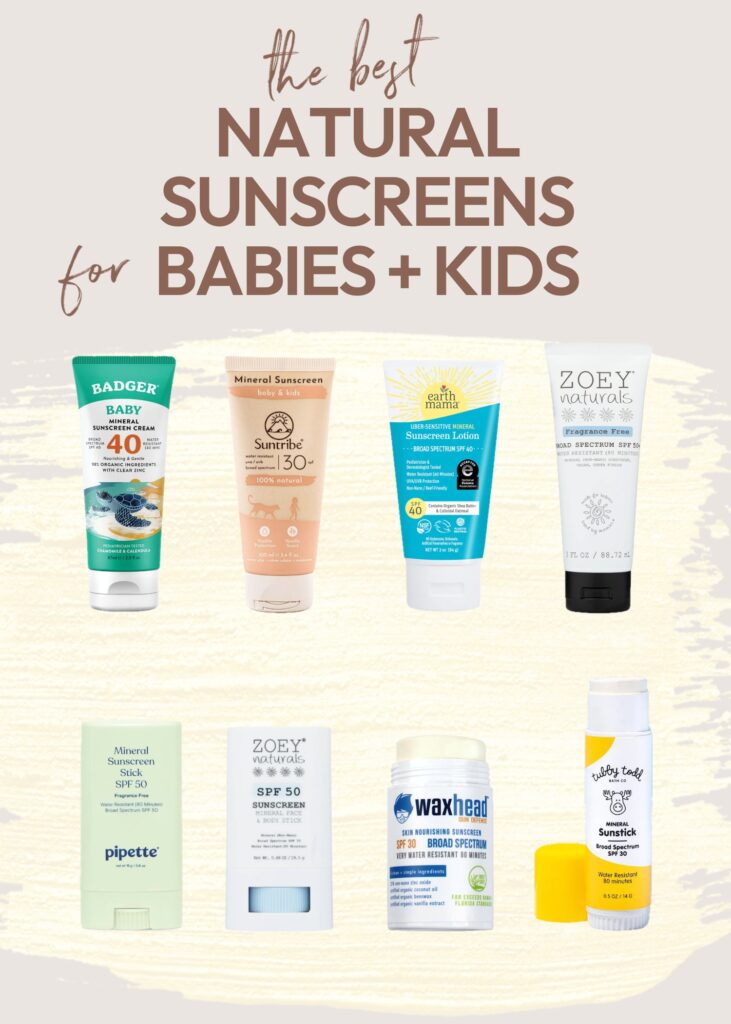
In this guide to safe sunscreen, we share all the helpful research our team has personally used throughout the past 16 years when it comes to natural sunscreen options.
Quick Ingredient Guide: What to Look For (and What to Avoid)
If you don’t have time to get a degree in chemistry or geek out about the health and environmental impacts of sunscreen chemicals, the list of safe natural sunscreens for kids is all you need. However, it is helpful to know what’s safe and what’s best to avoid.
✔ Safe Sunscreen Ingredients
- Non-nano Zinc Oxide – safest UVA/UVB protection, doesn’t penetrate skin
- Titanium Dioxide (non-nano) – safe, but less broad-spectrum than zinc
- Organic Oils & Butters – like sunflower, coconut, jojoba, and shea
- Antioxidants – like Vitamin E or pomegranate seed oil for added skin support
✖ Ingredients to Avoid:
- Oxybenzone, Octinoxate, Avobenzone – linked to hormone disruption and reef damage
- Homosalate, Octocrylene, Octisalate – endocrine disruptors, poorly studied
- Parabens, Fragrance, Retinyl Palmitate – can cause allergic reactions and hormone issues
- Sprays & Powders – risk of inhalation and uneven coverage
Be Aware of “Reef Safe” Labels
The Sustainable Tourism Association of Hawaii reports that the label “reef safe” is an unregulated marketing term. Sunscreens with the “reef safe” label may still contain harmful chemicals like avobenzone or homosalate.
How to Avoid Sunburn (Beyond Sunscreen)
Sunscreen is important, but it’s not the only way to protect young skin.
- Avoid peak sun – generally from 10 a.m.–2 p.m. in most areas
- Seek shade – stay under trees, tents, umbrellas
- Wear UV-protective clothing – long sleeves, hats, rash guards
- Use mineral sunscreen (non-nano zinc oxide) when outdoors during peak hours or around water
The Best Natural Sunscreens
Here’s our list of the best natural sunscreens the EWG database considers safe. You’ll see from our in-depth research on the ingredients and the personal testing below that we’ve done the digging to make sure they’re safe enough for our own families.
Our team has tried each of these brands, and we update this guide every spring. You can also rest assured after the Banana Boat, Neutrogena, and Aveeno sunscreen recalls, this list includes benzene free sunscreens.
Best Organic Baby Sunscreen Brands
Most sunscreens aren’t recommended for babies. The American FDA and the American Academy of Dermatology recommend using sunscreen on infants who are 6 months or older. There are few safety studies on infants, and babies are more likely to react to sunscreen ingredients.
With that in mind, we suggest using these sunscreens only on babies 6 months or older. Until then, keep baby in the shade or covered up. You’ll find several options for UV baby clothing, hats, and portable shades in our baby beach gear guide.
Badger Baby Mineral Sunscreen
This gentle sunscreen cream is made with just seven simple ingredients, including non-nano zinc oxide for safe, effective sun protection. Chamomile and calendula help soothe sensitive skin, while sunflower oil and vitamin E make it easy to apply… even on squirmy toddlers.
It’s pediatrician-tested, reef-safe, and free from harsh chemicals, so you can feel good about what you’re putting on your child’s skin.
Tubby Todd Baby Mineral Sunstick
Tubby Todd’s mineral sun stick rates a 1 (lowest hazard) on EWG’s Skin Deep database. Perfect for quick touch-ups, this reef-safe SPF 30 sunstick goes on smoothly and stays on. It is ideal for cheeks, noses, and other easy-to-miss spots.
Made with non-nano zinc oxide and nourishing plant-based ingredients, Tubby Todd’s sunscreen is water-resistant for up to 80 minutes, so your little one can keep playing while staying protected.
Pipette Mineral Sunscreen
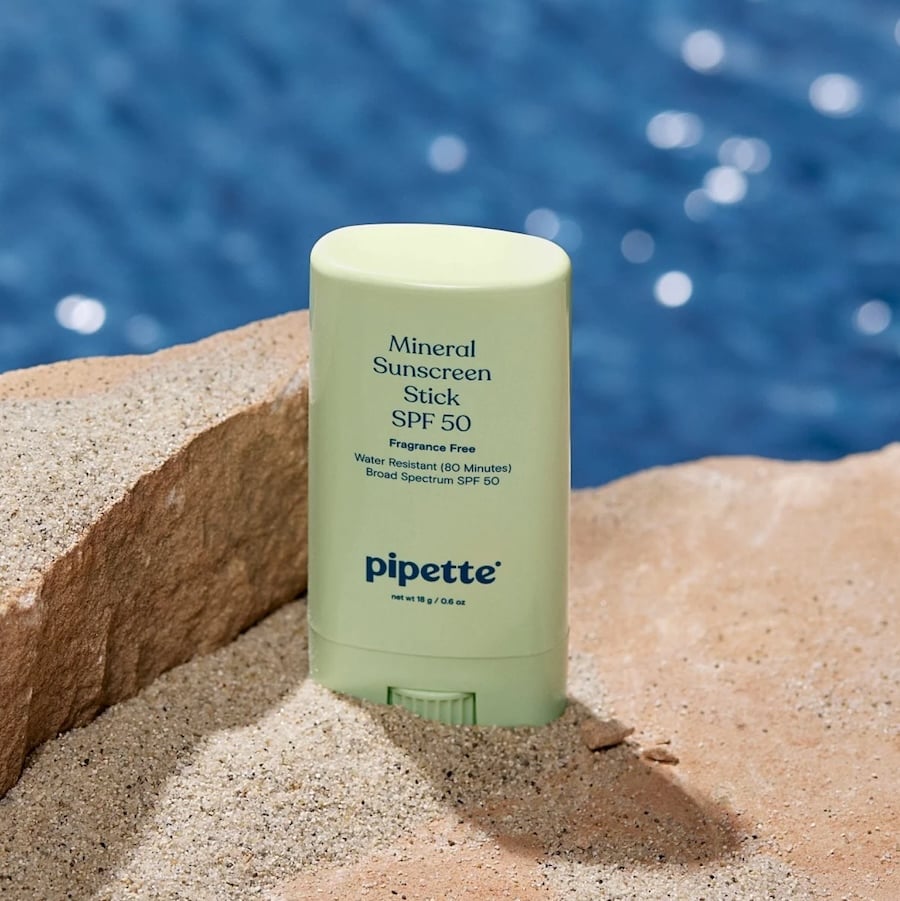
Rated a 2 on EWG’s database, Pipette’s water-resistant, baby-safe sunscreen stick provides broad-spectrum UVA/UVB protection for baby’s face and body. Made with 100% mineral non-nano zinc oxide, their easy twist-up stick is mess free and easy to use.
Pipette’s lightweight, hypoallergenic SPF 50 formula blends in easily. They include plant extracts like squalane to moisturize and calm sensitive skin. It comes in a stick version and a sunblock cream.
Best Natural Sunscreen for Kids
The above sunblock options for baby are all safe for kids, too. These additional brands contain kid-safe ingredients and are easy to apply.
Zoey Naturals Sheer Finish Mineral Sunscreen
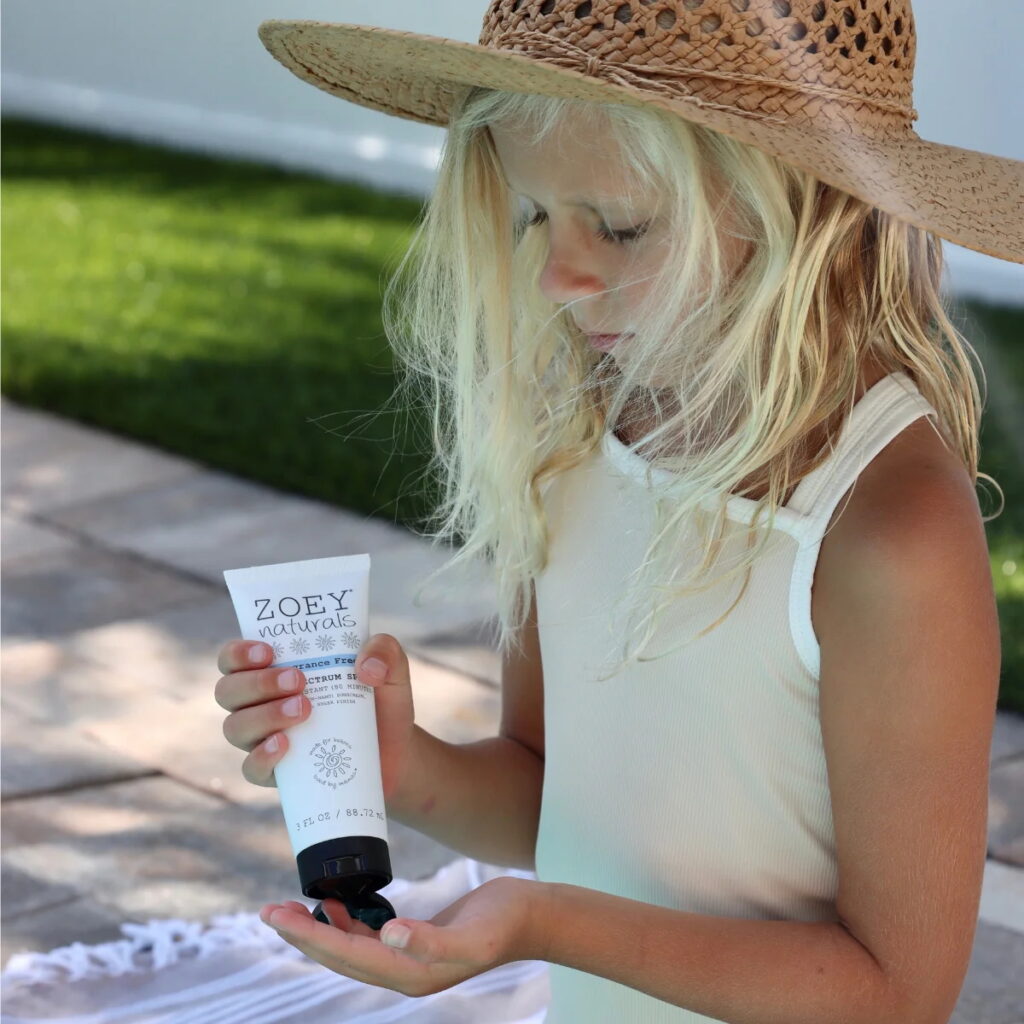
Zoey Naturals’ unscented, vegan mineral sunscreen is specially formulated to prioritize the safety of babies and toddlers. Their non-nano zinc formula offers broad-spectrum protection against both UVA and UVB rays.
With an SPF of 50+, it provides a sheer finish that’s easy to apply. Zoey Naturals is safe for sensitive skin, and it contains no ingredients that are known to be harmful to marine life. This sunscreen is the winner of a Mom’s Choice award, and is also available in a sunstick version.
Suntribe Baby & Kids Mineral Sunscreen
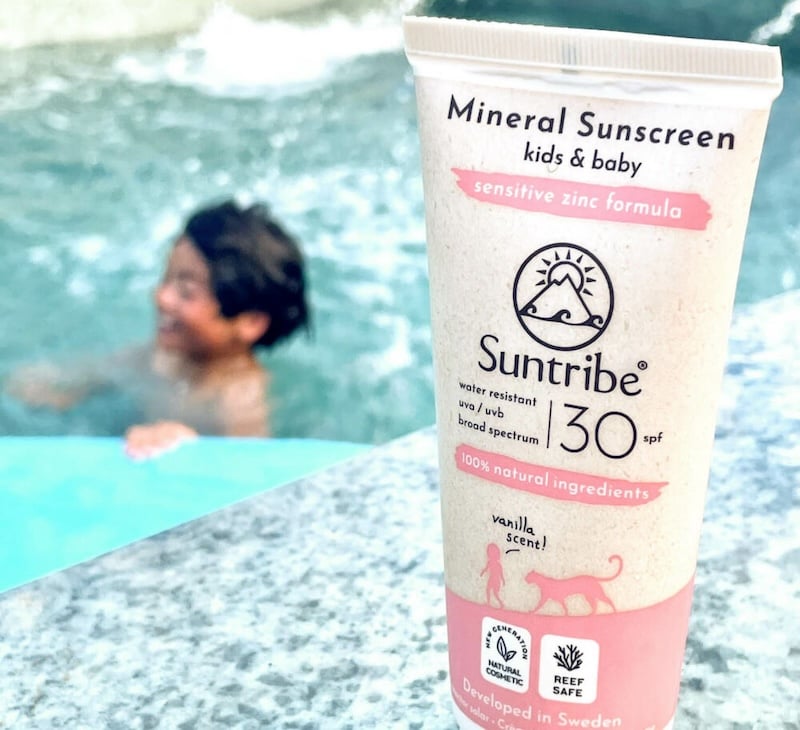
Suntribe’s Non-Nano Zinc Oxide offers broad spectrum protection against UVA and UVB rays. It also rates a 1 (lowest hazard) on EWG’s Skin Deep database and contains no microplastics.
This formula contains an SPF of 30. It’s free from perfume, preservatives, and synthetic chemicals. And it doesn’t sting if kids accidentally rub it into their eyes.
Earth Mama Organics Uber Sensitive Mineral Sunscreen
With delicate nontoxic ingredients, Earth Mama Organics makes the best sunscreen for children with sensitive skin. Made from organic shea butter and organic calendula, it contains both organic red raspberry seed oil (which has the highest naturally occurring SPF value in the plant world) and organic pomegranate seed oil for a cruelty-free boost in UV protection.
Earth Mama products are safe for those with sensitive skin. The active ingredient is non-nano Zinc Oxide. It’s also reef-safe, cruelty-free, and comes in a variety of options for baby (stick or cream), kids, uber sensitive, and more.
Safe rash-prone skin, there’s plenty of calming organic colloidal oatmeal and organic shea butter in this creamy uber-sensitive mineral sunscreen lotion.
Badger Kids Mineral Sunscreen
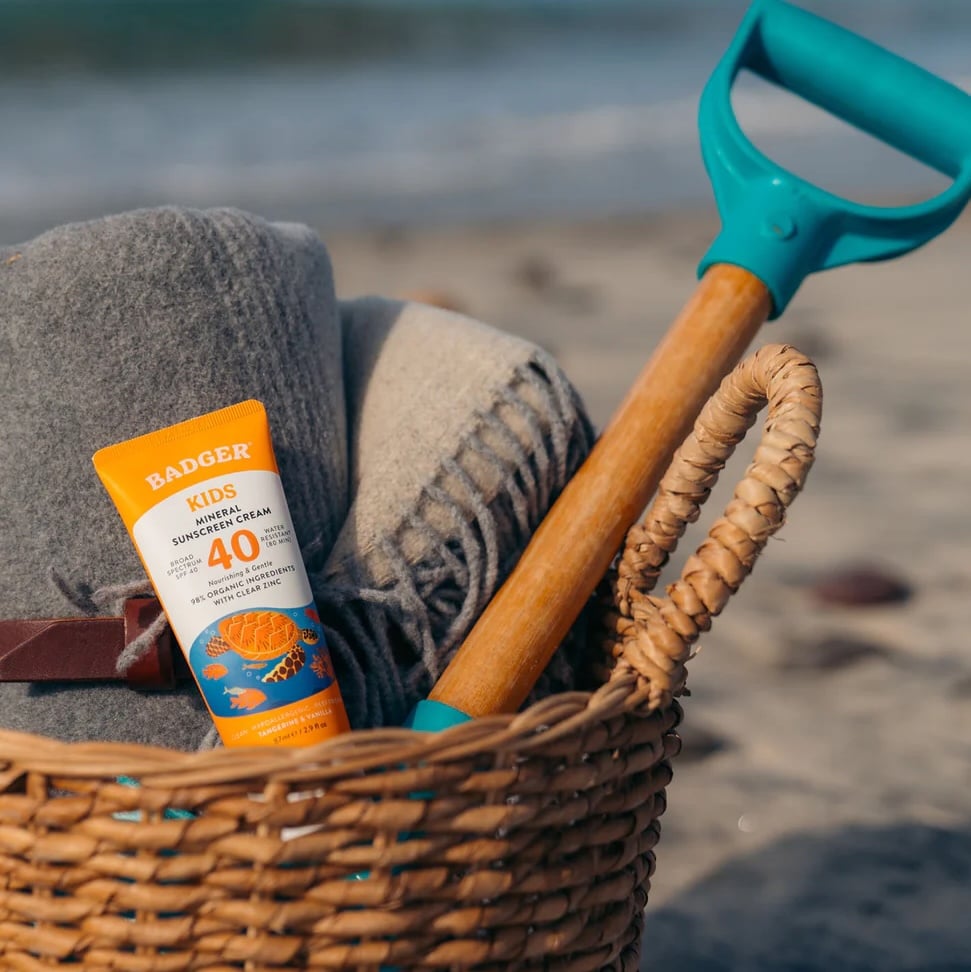
Badger’s integrity and commitment to human and environmental health inspire us, and their products are among the highest quality we’ve used.
Their active sun blocking ingredient is non-nano Zinc Oxide and the other ingredients are simply sunflower oil, Seabuckthorn, beeswax, and Vitamin E. It’s also organic, reef-safe, cruelty-free, and is rated a 1 by the EWG making it one of the best natural sunscreens for kids.
Waxhead Zinc Oxide Sunscreen Stick
The Florida-based, water-sport-loving founders of Waxhead know a little something about sun protection and ocean safety. Also rated a 1 by the EWG, Waxhead is made with non-nano Zinc Oxide and stays on in extreme conditions.
With an SPF of 30, Waxhead’s formula is exceptionally water resistant. We especially love the stick version that has a little bit of cocoa added to keep you from getting that pasty white look.
About Those Spray Sunscreens
As tempting as spray sunscreens are, EWG recommends avoiding them entirely, stating that “these ingredients are not meant to be inhaled into the lungs.”
Because the effects of sunscreen chemicals on the body through skin absorption are still not fully understood, inhaling them (especially in spray form) could pose even greater, yet unknown, risks. But when someone next to you on the beach is spraying down their child, it’s in your best interest to turn away and cover your nose and mouth (source).
Kids Need Vitamin D from the Sun
While it’s important to protect your child’s skin during peak hours, don’t keep them (or yourself) slathered in sunscreen 24/7. Just like every other living thing, we get part of our energy from the sun. But we’ve vilified the sun to the point that some kids are deficient in the nutrients it provides.
Why Vitamin D Matters:
- boosts the immune system
- builds strong bones and teeth
- improves eye health
- reduces the risks of colon, breast, ovarian, and kidney cancers
- helps improve blood levels
Sequential Daylight Exposure
Exposing your eyes (without sunglasses) to daylight at various times throughout the day supports the body’s circadian rhythm and improves sleep. Morning light in the eyes triggers signals from the retina to the brain that tells the body, “this is daytime.” This natural light exposure helps balance hormones like melatonin and cortisol, which regulate sleep, alertness, and mood.
Similarly, spending time outdoors near twilight sends the signal that it’s time to wind down for sleep. Be sure to keep any indoor lights on low or just use lamps, and avoid screens after dark to minimize blue light exposure before bed time.
Plus outdoor time is good for physical development and spending time in nature works wonders for a child’s mental health.
We know it can feel like a lot to sort through. But when it comes to protecting your child’s health, knowledge is power. These are the brands we trust for our own families, and we’ve done the research so you don’t have to.
If you have questions or favorite natural sunscreens for kids to add, we’d love to hear from you in the comments.

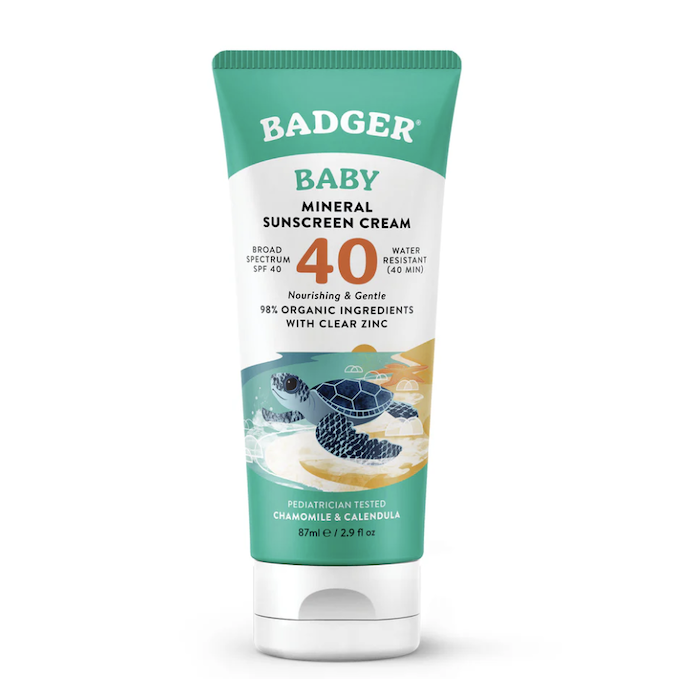
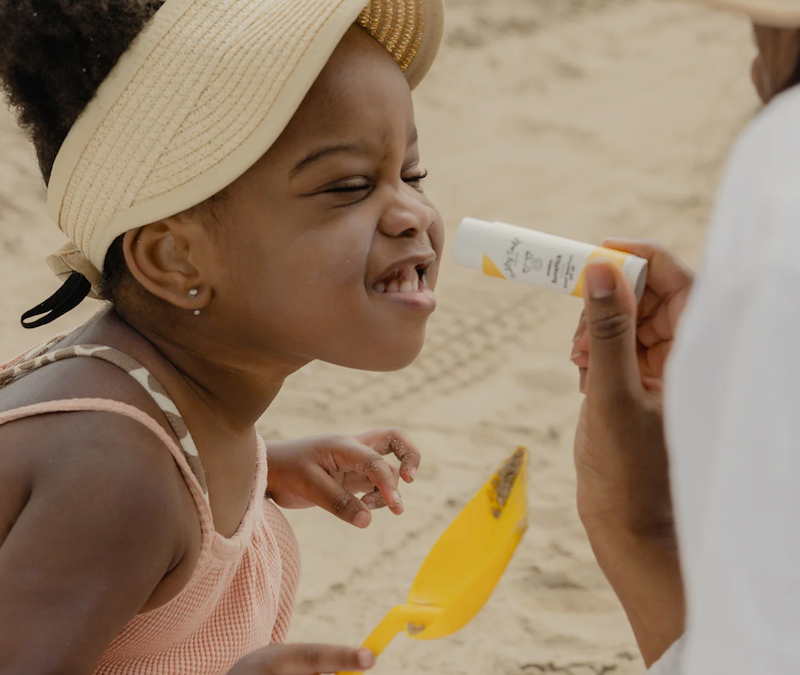
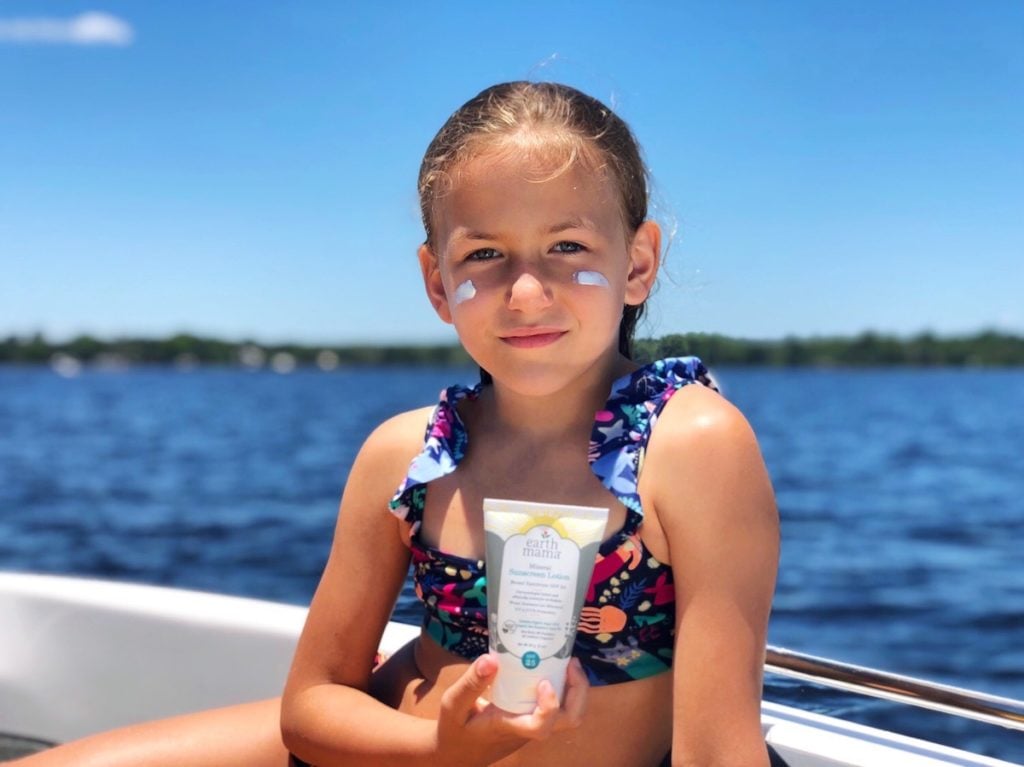
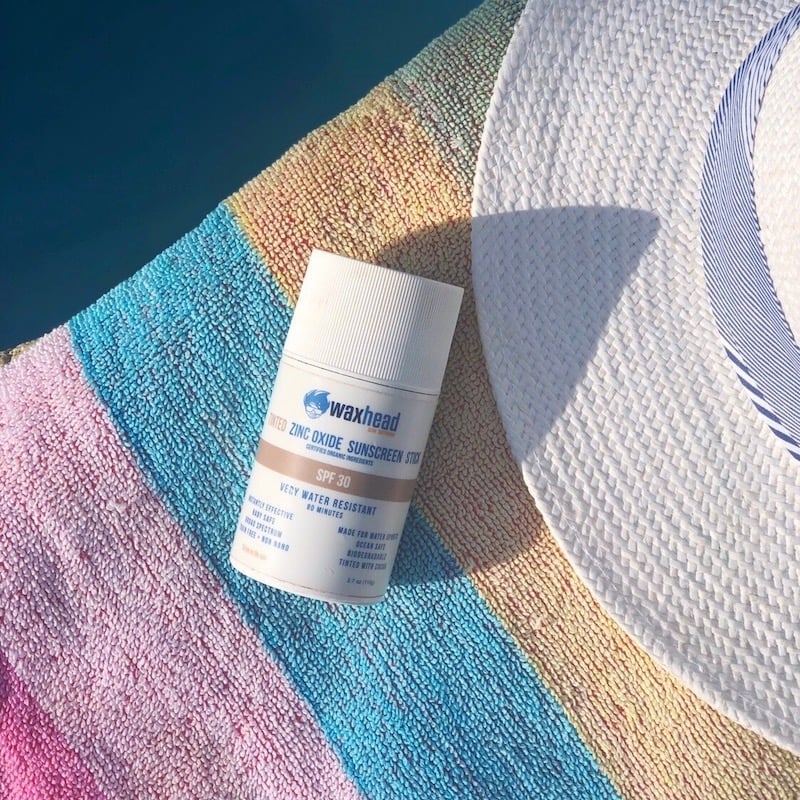
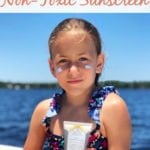


Most of these sunscreens will leave a white cast on darker skin. It would be lovely if that is mentioned in your reviews, as well as which sunscreens would work well for dark skin.
Definitely look into Waxhead. It’s listed above as the one with a little bit of cocoa added to blend into darker skin or at least keep the white cast away. The cocoa formula is available in a tube and a stick 🙂
I love seeing all the choices of sunscreen for kids, toddlers, and babies these days. So many great eco-friendly, safe choices coming on the market!